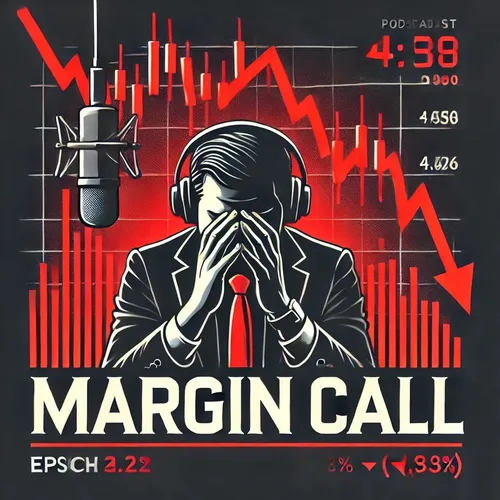Margin Trading: Amplifying Gains and Risks, Margin Calls, and Short Squeezes
- Author
- Quiet. Please
- Published
- Thu 04 Sep 2025
- Episode Link
- https://www.spreaker.com/episode/margin-trading-amplifying-gains-and-risks-margin-calls-and-short-squeezes--67630833
When an investor trades using borrowed money through a brokerage account, this is called trading on margin. Buying on margin allows investors to use leverage, increasing their buying power compared to what their cash alone would support. However, this approach amplifies both gains and losses, making risk management crucial. A margin call occurs when the value of the investor's borrowed account falls below the broker's required minimum. When that happens, the brokerage demands more collateral or cash to bring the account back to the required level. If the investor is unable or unwilling to meet the margin call, the brokerage can liquidate positions, often at a loss, to protect its own capital. According to TradingView, these margin and liquidity constraints can force sudden liquidation of positions if the market moves steeply against the investor.
Short selling is one of the riskiest strategies when trading on margin. It involves selling borrowed shares in anticipation that their price will decline, with the intent to buy back at a lower price and return them to the lender, pocketing the difference. If the price instead rises, short sellers must buy back at a higher price, leading to potentially unlimited losses. Because of this risk, brokers closely monitor margin requirements for short positions. TheStreet notes that, if the price of a shorted asset rises sharply, rapid losses can occur and a margin call may be triggered, which forces the short seller to quickly deposit additional capital or cover their position to prevent further loss.
Short positions can become especially troublesome when adverse market moves are sharp, unexpected, or widespread, a phenomenon sometimes called a short squeeze. When a large number of investors are short a particular asset and the price unexpectedly rises, brokers may trigger margin calls all at once, compelling many short sellers to buy back shares at elevated prices to close their positions. This can drive the price up even further in a self-perpetuating cycle. According to Nasdaq, a rising short interest can be a sign of bearish sentiment, but it also increases vulnerability to such squeezes. StoneX explains that in highly volatile commodities markets, margin calls and forced covering can occur when trend reversals or price spikes catch leveraged traders off guard.
Ultimately, both margin calls and short positions in trouble highlight the double-edged nature of leverage in financial markets. Margin allows for greater gains but exposes traders to steeper and faster losses if things move against them. For those in short positions, risk is elevated by the fact that losses can theoretically be limitless, as the underlying asset’s price has no ceiling. When trouble arises from market volatility or unexpected news, being caught in a short position can quickly spiral from uncomfortable to catastrophic if risk is not properly managed.
Thanks for tuning in and remember to subscribe. This has been a quiet please production, for more check out quiet please dot ai.
For more http://www.quietplease.ai
Get the best deals https://amzn.to/3ODvOta
